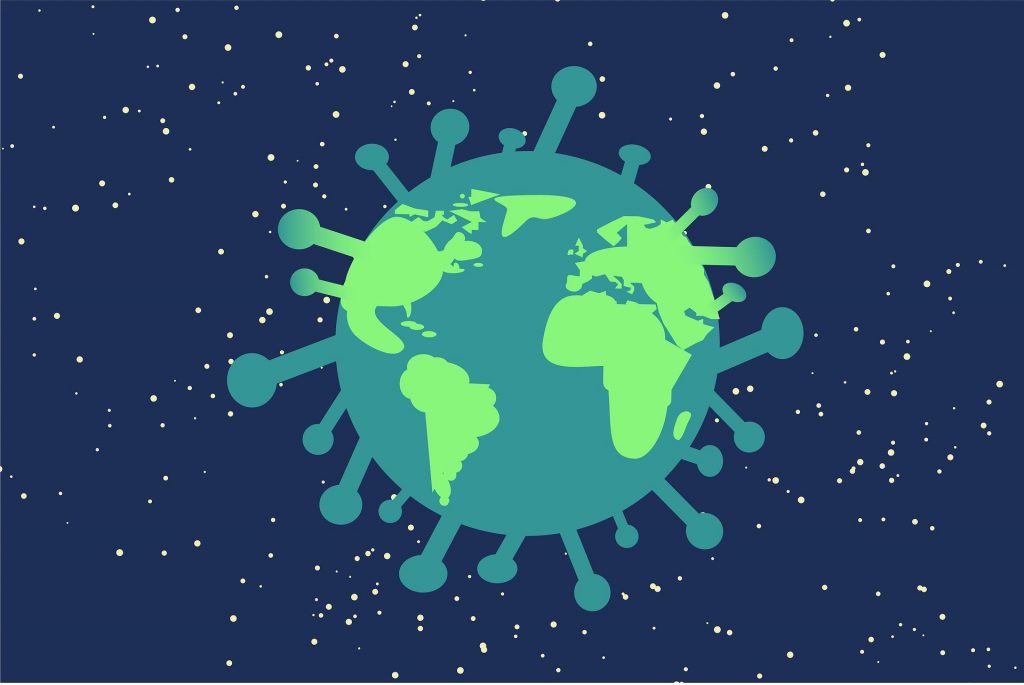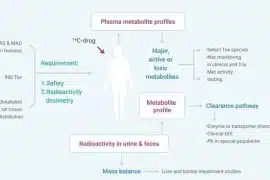
Ever since the World Health Organization (WHO) declared Covid-19 a pandemic in March 2020, the deadly virus has affected about 17 million people and claimed more than three million lives as of May 30 this year.
In Bangladesh, the total coronavirus death tally recently crossed 10,000 while the number of people affected stands at nearly one million.
It is difficult to speak about the future of the post-Covid world as the pandemic is still ongoing.
A second, if not third, wave of infections is currently sweeping across different parts of the world, including Bangladesh, and it is predicted that this trend could keep repeating every few months.
But although it cannot be said how many more waves the world will face, the spread of Covid-19 is sure to lessen within a couple of years thanks to the roll out of vaccination programmes in most countries.
Undoubtedly, the impact of this pandemic upon the social, political, and economic sectors of different countries are numerous.
The global supply chain has been disrupted by the recent upsurge of the pandemic, which has thrown thousands, if not millions, of people into unemployment in different parts of the world.
Yang Jiemian, chairman of the council on academic affairs at the Shanghai Institutes for International Studies, argues that the pandemic has caused a dreadful economic recession akin to the Great Depression in the 1930s.
Therefore, the devastating impact of Covid-19 is already visible worldwide and it can be predicted that the effect will continue for quite a long while.
In this circumstance, fighting against such a common threat requires more cooperation among various countries, especially in the developing southern nations that need more support from their developed counterparts, many of whom have started to overcome the crisis.
Unfortunately, whereas the pandemic could be considered an opportunity to minimise the development gap between countries by helping each other, it has exacerbated the existing political conflict and strategic distrust among the great powers.
The worldwide crisis caused by the breakout of Covid-19 has proved that some states are still realist in nature even in this growing globalised era of the 21st century.
While countries like Bangladesh are experiencing a dearth of vaccines, western nations, especially the US and UK, are preserving vaccines for their own people.
India has taken a similar approach, having stopped all vaccine exports in a bid to handle domestic demand.
But on the other hand, China is taking advantage of the situation in India by maintaining strong anti-Covid-19 cooperation with Afghanistan, Pakistan, Nepal, Sri Lanka, and Bangladesh, drifting a vaccine storage reserve for South Asia.
Prior to the devastating effect of the second wave of Covid-19 pandemic in India, which has the biggest vaccine manufacturing capacity, the country intended to uphold its image globally by donating and exporting vaccines.
Russia also wants to demonstrate its power and efficiency by producing effective vaccines on their own and being less affected than the US. Both Russia and China are the main sources of vaccines for Bangladesh right now as India is not able to provide any at the moment.
So, Covid-19 vaccine has been used as a tool to achieve the diplomatic interests of the great powers. Therefore, the Soufan Centre, a research body, rightly considers this vaccine competition among the countries as the new form of the “arms race”.
Consequently, countries like Bangladesh fall into a very complex situation amid this great power rivalry. As we know, the geopolitical tension between China and India is a continuous process since both countries want to increase their sphere of influence in the South Asian region.
In this process, Bangladesh is considered as an important actor for both China and India for its geostrategic location in the Bay of Bengal.
At the same time, this geostrategic location of Bangladesh and its proximity to the Bay of Bengal in the Indo-Pacific region has increased its significance to the US as well.
Therefore, China assumes that the US and India will put pressure on Bangladesh to join the expanded group of the Quadrilateral Security Dialogue (Quad), an informal strategic alliance involving the US, India, Japan, and Australia, to combat the Covid-19 pandemic in the coming days.
As Bangladesh is an important development and strategic partner to China in the Belt and Road Initiative, China assumes that Bangladesh joining the Quad would affect its strength in South Asia.
That is why China has warned Bangladesh to not join the forum and if it still tries to do so, the move will substantially damage bilateral relations, as per the report published by The Diplomat on May 18, 2021.
However, the Ministry of Foreign Affairs has confirmed that there is no such possibility for Bangladesh to join the Quad at this moment.
This warning from China to Bangladesh has revealed the country’s vaccine diplomacy as right now, China is a significant source for Covid-19 vaccines in Bangladesh amid the pause of India’s supply.
Therefore, Bangladesh will have to be very careful in dealing with these countries in the post-pandemic world as this rivalry among India, China, the US, and Japan is expected to continue.
Meanwhile, as Bangladesh is going to graduate to a developing nation in 2026, the country should continue its efforts to maintain a balanced relation; “friendship to all, malice to none as per the article 25 of the constitution of People’s Republic of Bangladesh; with all these big powers as all of them are equally important for the economic and infrastructural development of the country.
Moreover, the World Bank report on Bangladesh Development Update published in April 2021, says that the post-pandemic recovery of Bangladesh requires cross-border connectivity in the South Asian region. As per the report, Bangladesh should leverage its strategic location in South Asia to serve as a regional logistics node.
The report also mentions that, to maximize the benefits from the almost completed and envisioned development projects, upgrading transport infrastructure, harmonizing regulatory regimes, and integrating customs and border management systems are required.
If such measures are taken and implemented successfully, it is expected that the almost-completed Padma Bridge will allow the establishment of an active link between Dhaka and Kolkata, which will be extended over time toward Myanmar and Southeast Asia more broadly.
Besides, it is envisioned that the proposed Sylhet-Chattogram highway will help to get access to India’s northeast and other global markets while the Bangladesh-Bhutan India-Nepal (BBIN) Motor Vehicles Agreement will allow signatory countries to use each other’s road networks to transport both goods and passengers.
Furthermore, the steps taken by both Bangladesh and India to reduce non-tariff barriers at border crossings should be implemented scrupulously to continue bilateral trade without any hesitation in the post-pandemic world.
Another significant aspect in which the government of Bangladesh may face numerous challenges in the post-pandemic era is the reintegration of the returnee migrant workers.
As we know, most Bangladeshi migrant workers are employed in different sectors, including tourism, hospitality, and construction, in Middle Eastern and South-East Asian countries.
Due to the coronavirus outbreak, a huge number of these migrant workers had to leave their jobs abroad and return to Bangladesh, which may have a negative impact on the local economy as migrant workers are a major source of remittance.
However, as per a report by Bangladesh Bank and the Bureau of Manpower, Employment and Training online, remittance inflow rose dramatically by about 54 per cent between December 2019 and July 2020.
Furthermore, an annual 18.5 per cent rise in remittance has been recorded despite a 67 per cent fall in employment in 2020 compared to the previous year.
Nevertheless, it cannot be guaranteed that the rise of remittance will be continued in such a manner in the post-Covid period as the pandemic has not halted yet.
Therefore, it will be difficult for Bangladesh to reintegrate returnee migrants with the local job market as the local economy has already been affected by the prolonged lockdowns, when millions of people working in informal sectors lost their jobs.
Hence, the government needs to negotiate with host countries to rehire the returnee migrant workers and extend their work permits.
Apart from this, challenges to achieve the country’s sustainable development goals (SDGs) will be more crucial in the post pandemic period. Bangladesh was already in a challenging position to achieve its SDGs before Covid-19 arrived.
The pandemic has since added more wings to the challenges for Bangladesh in achieving such goals within the stipulated time frame.
As a result, the progress of achieving the SDGs will remain challenging in most cases.
At present, although the government has taken several measures to achieve the SDGs, progress in this regard is not very satisfactory.
For example, Bangladesh is on track to achieve SDGs 1, 4, 8 and 13 while SDGs 2, 3, 6, 7, 9 and 11 are moderately improving even though challenges remain.
SDGs 5, 14 and 16 are stagnating, indicating significant challenges, and SDGs 15 and 17 are decreasing with the remaining major challenges, as per the Sustainable Development Report, 2020.
“Bangladesh has taken several measures through embedding its SDGs into the 7th Five-Year Plan (2016-2020), 8th Five-Year Plan (2021-2025), and the two Perspective Plans (2021-2041),” it said.
“This accomplished the mapping of ministries/agencies by targets, preparing action plans for all relevant ministries/agencies, and putting in place the needed monitoring and evaluation framework,” the report added.
This means that only taking domestic initiatives will not help in this regard until or unless the international community comes forward to help developing countries like Bangladesh achieve its SDGs within the stipulated time frame.
Therefore, the country needs an intermestic approach that ensures the interrelationship between international and domestic policies or initiatives.
The intermestic approach, as argued by Kurniawati (2017), puts emphasis on the dominant role of the government in policy changes while also placing importance on international approaches along with the involvement of non-state actors in the domestic and international arenas to influence the policy change process.
In a nutshell, the ongoing vaccine diplomacy of producing nations, mutual distrust among the big powers and the prolonged features of the Covid-19 pandemic have proved that the pattern of relations among the countries will not turn around in the near future whether the pandemic comes to an end or not.
Relevant article: THE COVID-19 PANDEMIC: A GLOBAL PUBLIC HEALTH CATASTROPHE AND EVOLVING DIPLOMACY
Instead, more distrust and egotism will be added to the existing conflictual pattern of relationships among the great powers of the world.
In this context, countries like Bangladesh have no other option but to continue its balanced effort to maintain foreign relations. As Bangladesh is awaiting its graduation from LDC status to developing country in 2026, the coming days are very crucial for making the transition smooth and well-managed.
Therefore, to overcome the challenges of recovering from the Covid-19 fallout, the government of Bangladesh needs to follow careful steps in making foreign policy decisions along with formulating appropriate national policies and timely action.
To overcome the challenges created by vaccine diplomacy, Bangladesh should focus on its own capacity to produce vaccines to meet the demand of national inoculation.
Besides, along with ensuring regular hygiene, a proper healthcare system is needed to safeguard the country and help it overcome any challenges in the post-pandemic world.
The author is assistant professor of the department of international relations, and faculty of security and strategic studies at Bangladesh University of Professionals.







